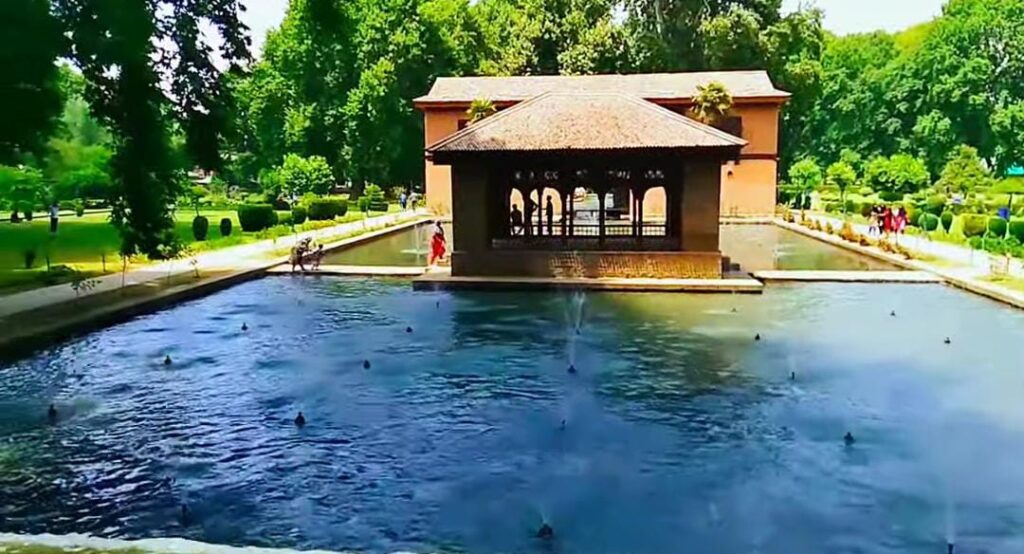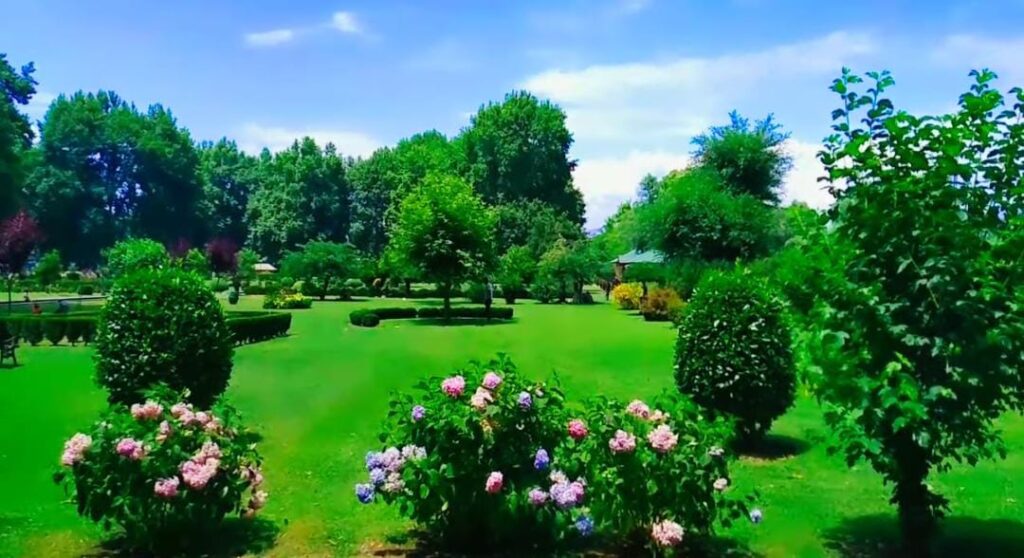
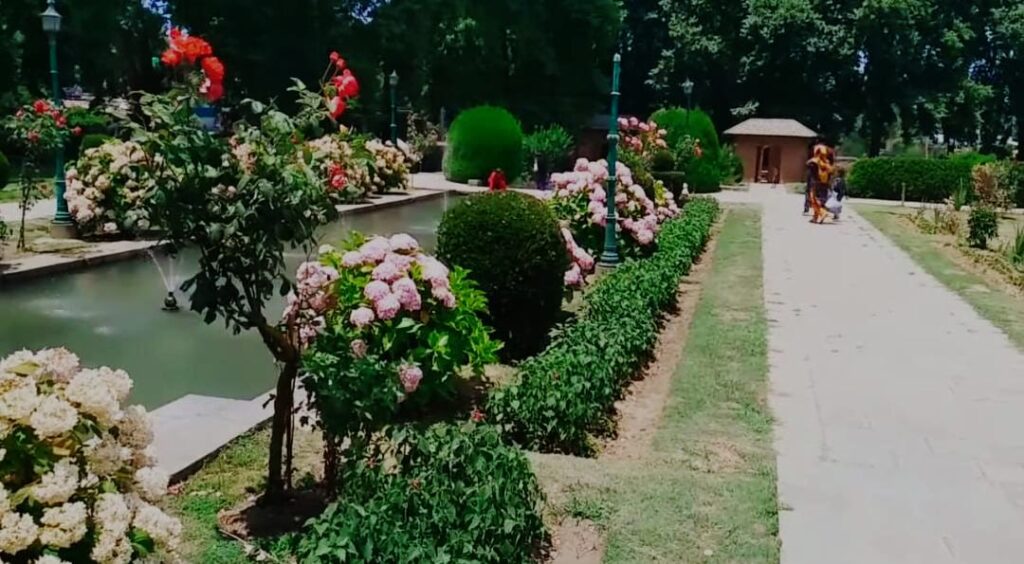
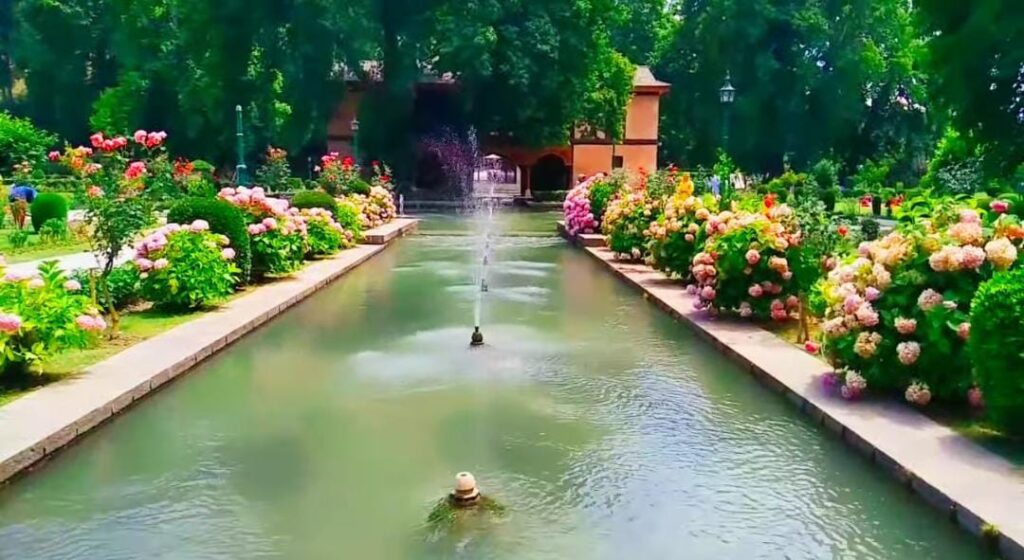
achabal garden
Achabal Garden is a Mughal garden located in the Anantnag district of Jammu and Kashmir. It is a UNESCO World Heritage Site and is one of the most popular tourist destinations in Kashmir. The garden was built in the 16th century by Emperor Jahangir and his daughter Jahanara Begum. It is a classic example of Mughal garden design, with its terraced lawns, cascading fountains, and intricate water channels.
Achabal Garden is divided into three main sections: the upper garden, the middle garden, and the lower garden. The upper garden is the most formal section of the garden and is home to the main pavilion, known as the Diwan-i-Aam. The middle garden is more informal and is home to a variety of fruit trees and flowers. The lower garden is known for its cascading waterfalls and lush green meadows.
Achabal Garden is a popular destination for visitors of all ages. Visitors can take a leisurely stroll through the garden, admire the natural beauty, and enjoy the peaceful atmosphere. The garden is also a popular spot for picnics, boating, and fishing.
Achabal garden location
From Srinagar to Achabal Garden
Distance: The distance between Srinagar and Achabal Garden is approximately 70 kilometers (43 miles).
Travel Time: The travel time by road from Srinagar to Achabal Garden can vary depending on road conditions and traffic, but it typically takes around 2 to 2.5 hours.
From Anantnag to Achabal Garden:
Distance: The distance between Anantnag and Achabal Garden is relatively short, approximately 8 kilometers (5 miles).
Travel Time: The travel time from Anantnag to Achabal Garden is typically around 15 to 20 minutes by road.
History of Achabal Garden
The history of Achabal Garden dates back to the 16th century when it was first commissioned by Emperor Jahangir. Jahangir was a great lover of gardens and he built many gardens throughout his reign. Achabal Garden was one of his favorite gardens and he spent a lot of time there.
Jahanara Begum, the daughter of Jahangir, also played a role in the development of Achabal Garden. She inherited the garden from her father and she continued to improve it. She added new features to the garden, such as the Diwan-i-Aam and the lower garden.
Achabal Garden, also called Achabal Bagh, is an old Mughal garden in anantnag. It’s famous for its lovely Mughal design, with terraces, water channels, and beautiful gardens. Here’s a short history:
- Mughal Times: Achabal Garden was made during the Mughal period when Emperor Jahangir ruled (1569-1627). It was built in the early 17th century, around 1620, by Nur Jahan, Jahangir’s wife. It was meant to be a pretty garden for the Mughal royal family.
- Garden Layout: Achabal Garden follows the traditional Mughal Charbagh style, with terraces, flowing water channels, fountains, and neat flowerbeds. It’s known for its symmetrical design and Persian style water channels that make it peaceful.
- Natural Springs: One special thing about Achabal Garden is its natural springs. These springs give water to the garden’s channels and fountains. People believe the water is pure and refreshing.
- Historical Importance: Achabal Garden is historically important because Mughal emperors often visited it when they came to Kashmir. It was their summer escape from the hot Indian plains.
- Restoration: Over time, Achabal Garden has been fixed and looked after by different rulers, including the Dogra rulers of Jammu and Kashmir. They’ve tried to keep the original Mughal design.
- Tourist Attraction: Today, Achabal Garden is a popular tourist spot. People come to see the Mughal architecture, the well-kept gardens, and the natural beauty around. It’s especially famous for its chinar trees, which turn red and orange in the autumn.
Design and Architecture of Achabal Garden
Achabal Garden is a classic example of Mughal garden design. It is characterized by its terraced lawns, cascading fountains, and intricate water channels. The garden is divided into three main sections, each with its own unique features.
The upper garden is the most formal section of the garden. It is dominated by the Diwan-i-Aam, which is a large pavilion that was used for public audiences. The middle garden is more informal and is home to a variety of fruit trees and flowers. The lower garden is known for its cascading waterfalls and lush green meadows.
The layout and design of Achabal Garden show the classic Mughal style with its special features and careful arrangement. Let’s see how it’s designed:
Four Part Layout: Achabal Garden is divided into four parts, like how you might cut a pizza into four slices. Each part is separated by pathways or flowing water channels. This layout is meant to resemble a beautiful garden mentioned in Islamic stories.
Stepped Levels: The garden is built on levels that go down like stairs. These levels have walls holding them up and make the garden look interesting. You can explore the garden one step at a time.
Flowing Water: You’ll see flowing water in the garden, like small streams. They are designed in a Persian style and are there to make you feel calm and cool. Plus, they help water the garden.
Fountains: Fountains that shoot up water are a common sight in Mughal gardens, and you’ll find them in Achabal too. They’re put in clever places near the water channels and in the center of the garden. They make the garden look even more beautiful and peaceful with the sound of running water.
Flower Gardens: Mughal gardens are famous for their pretty flowerbeds. Achabal Garden has lovely flowerbeds with lots of colorful and sweet smelling flowers. People take great care of these flowerbeds to make the garden look beautiful.
Symmetry and Patterns: The garden is designed to look the same on both sides, like when you fold a piece of paper in half. The paths, waterways, and gardens are all carefully arranged to make the garden look balanced and neat.
Buildings: There are some buildings in the garden, like small houses and pavilions. They give you shade and a place to relax while you enjoy the garden. These buildings are made in the Mughal style, with arches and pretty designs.
Natural Springs: Achabal Garden uses water from natural springs that come up from the ground. This water flows through the channels and fountains, making sure the garden always has fresh water.
Fitting in with Nature: The garden is designed to look like it belongs in the middle of nature. It’s surrounded by green trees and the tall Himalayan Mountains in the background. The design of the garden works together with the natural beauty of the area.
Things to do in Achabal Garden
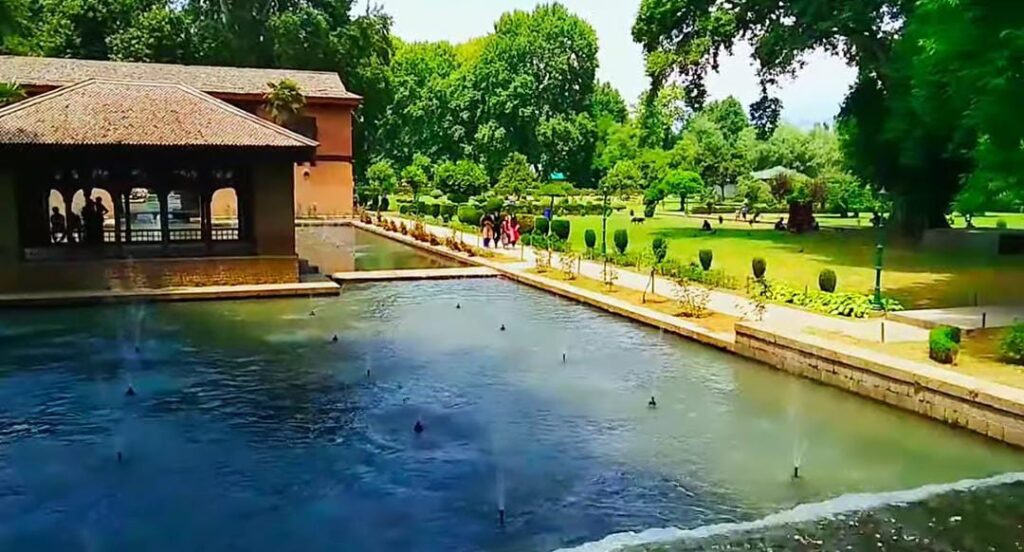
Achabal Garden is a beautiful place with Mughal style buildings and a calm atmosphere. Here are some fun things you can do when you visit:
Take a Walk: Go for a relaxing walk in the garden. Enjoy the neat flowerbeds, green plants, and the gentle sound of flowing water in the channels.
Snap Photos: If you like taking pictures, you’re in luck, The garden has many pretty spots for photos. Capture the colorful flowers, the balanced design, and the fancy buildings.
Sit by the Fountains: Find a comfy spot near the fountains and listen to the soothing sound of water. It’s a great place to chill and enjoy the beautiful surroundings.
Have a Picnic: Bring some food and have a picnic with your family or friends. There are special spots where you can lay out a blanket and eat while surrounded by nature’s beauty.
Read or Meditate: If you want some peace and quiet, find a calm place, like under a tree or in a pavilion, and read a book or meditate.
Check out the Buildings: Admire the cool Mughal-style buildings in the garden, like the arches and fancy screens. You can also learn about the history and culture connected to these structures.
Learn Some History: If you’re into history, take a moment to discover the Mughal era and why Achabal Garden was important during that time. Learn about interesting people like Emperor Jahangir and Empress Nur Jahan.
Explore Nearby Places: Achabal is in a beautiful area in Jammu and Kashmir. You can also visit other cool places nearby, like Pahalgam and Anantnag, to make your trip even more awesome.
Enjoy the Seasons: Depending on when you visit, you’ll see different things in Achabal Garden. In the fall, the chinar trees turn bright red and orange, and it’s really stunning.
Buy Souvenirs**: Sometimes, there are little shops or local sellers near the garden. You might find special things to buy as a memory of your visit.
Keep it Clean: While you’re having fun in the garden, remember to keep it clean. Don’t leave trash around, and be careful not to harm the plants or buildings. Let’s help take care of this special place.
Watch Birds: If you like birds and nature, Achabal Garden and the area around it have many kinds of birds. Bring binoculars and see if you can spot some of them.
Best time to visit Achabal Garden
The best time to visit Achabal Garden depends on your preferences and what you want to experience.
Spring (March to May):
- Spring is a beautiful time to visit Achabal Garden. During this season, the garden comes to life with vibrant flowers in full bloom, creating a colorful and fragrant atmosphere.
- The weather is pleasant, with mild temperatures, making it comfortable for exploring the garden.
- Spring is an excellent time for photography, as you can capture the garden’s beauty at its peak.
Summer (June to August):
- Summer in Achabal can be warmer compared to other seasons. However, it’s still a good time to visit if you can handle the slightly higher temperatures.
- The garden provides shade, and you can enjoy the coolness of the flowing water and fountains.
- Summer is a suitable time for picnics and spending extended hours in the garden.
Autumn (September to November):
- Many visitors consider autumn the best time to visit Achabal Garden. During this season, the chinar trees in the garden turn vibrant shades of red, orange, and gold, creating a breathtaking visual display.
- The weather is generally pleasant, and the garden’s beauty reaches its peak during the fall months.
- Autumn is perfect for those who want to experience the garden’s stunning foliage.
Winter (December to February):
- Winter in Achabal can be quite cold, with temperatures dropping significantly, especially at night.
- While the garden may not have the colorful flowers and foliage of other seasons, it still offers a serene and peaceful atmosphere.
- If you enjoy a quieter and more contemplative visit and don’t mind the cold, winter can be a unique time to explore the garden.
Tips for visiting Achabal Garden
Visiting Achabal Garden can be really fun, but it’s important to be ready so you can enjoy it to the fullest. Here are some simple tips:
Check the Hours: See when the garden is open and when it closes. It might change depending on the time of year, so plan your visit accordingly.
Know the Weather: Depending on the season, the weather can be different. Check the weather forecast before you go.On sunny days, make sure to apply sunscreen and don a hat to protect yourself from the sun’s rays. If it’s cold, dress warmly.
Good Shoes: Wear comfy shoes because you’ll be walking around a lot. The paths can be bumpy, so strong shoes are better.
Bring Your Camera: If you like taking pictures, don’t forget your camera or phone. Don’t forget to carry additional batteries or a charger as a precaution.
Snacks and Water: Take a water bottle and some snacks, especially if you plan to be there for a while. You might not find food inside the garden.
Picnic Time: If you want to have a picnic, bring a blanket and some picnic food. There are spots in the garden where you can sit and eat.
Follow the Rules: Be sure to follow the garden’s rules. Don’t pick flowers or leave trash. Respect the garden and its history.
Guided Tours: If there are guided tours available, think about taking one. Guides can tell you interesting things about the garden’s history and design.
Learn the History: Read about the garden’s history before you visit. It will help you understand and enjoy it more.
Relax: Take your time to enjoy the calm feeling of the garden. Find a quiet spot to sit, listen to the water, and enjoy the natural beauty.
Buy Local: Check out nearby shops for local souvenirs and crafts.
Keep Your Stuff Safe: Be careful with your belongings, especially in crowded places. Even though Achabal is generally safe, it’s good to be cautious.
See Other Places: If you have extra time, consider visiting nearby attractions like Pahalgam or Anantnag to make your trip even more exciting.
Respect Local Ways: If you’re from a different place, learn about the local customs and how people do things. Be polite and show respect.
Clean Up: Be a responsible visitor by not leaving any trash behind. Keep the garden clean and beautiful for others.
Conclusion
Achbal Gardens is a Mughal masterpiece that is a must-visit for anyone traveling to Kashmir. This stunning garden is the perfect place to relax, unwind and enjoy the natural beauty of the area.
Achabal Garden is a classic example of Mughal garden design, with its terraced lawns, cascading fountains, and intricate water channels. The garden is divided into three main sections, each with its own unique features. The upper garden is the most formal section of the garden and is home to the main pavilion, known as the Diwan-i-Aam. The middle garden is more informal and is home to a variety of fruit trees and flowers. The lower garden is known for its cascading waterfalls and lush green meadows.
Visitors to Achabal Garden can enjoy a variety of activities, such as taking a leisurely stroll through the garden, admiring the natural beauty, and enjoying the peaceful atmosphere. Visitors can also learn more about the garden’s rich heritage and admire its intricate design. Achabal Garden is also a popular spot for picnics, boating, and fishing.
Achabal Garden is a beautiful and historic garden that is a valuable asset to Kashmir. It is a place where visitors can escape the hustle and bustle of everyday life and enjoy the natural beauty of the region.
Discover the Magic of Kashmir’s Natural Beauty in Our New Blog – An Adventure You Can’t Miss! Gulmarg , Dal Lake , Pahalgam , Tulip Garden , Doodhpathri Kashmir
